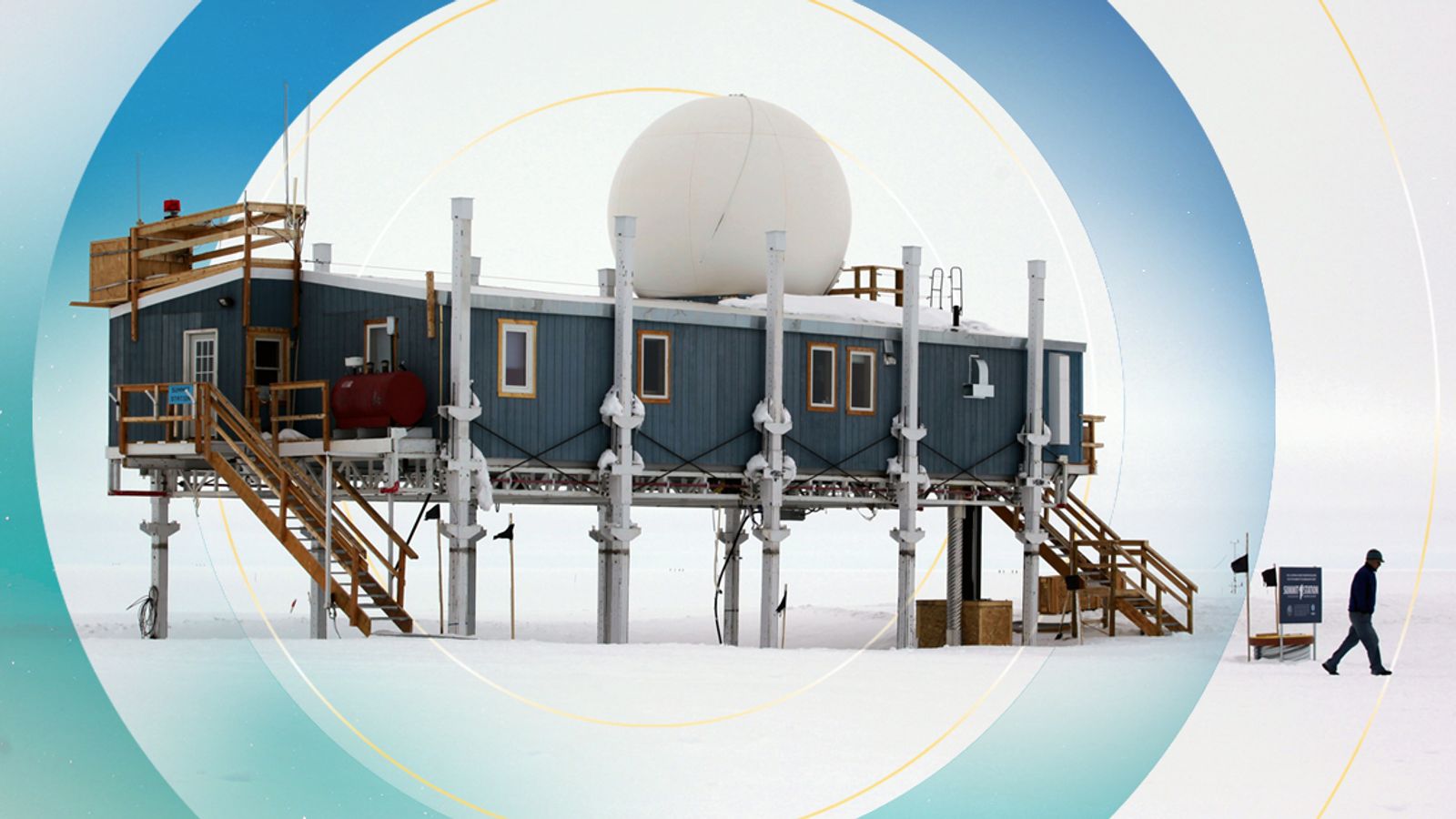Rain fell for several hours at the summit of Greenland’s ice sheet last weekend for the first time in recorded history, as temperatures rose above freezing.
Scientists confirmed rain was observed at Greenland‘s Summit Station, which is located 10,551ft above sea level.
Along with the first recorded report of rain at the summit on Sunday, the Arctic research station saw above-freezing temperatures for more than nine hours – the third time in less than a decade and the fourth time in history, according to the National Snow and Ice Data Center.
Please use Chrome browser for a more accessible video player
Weather recording began at the station in 1950.
The National Snow and Ice Data Center said the higher temperatures were caused by a region of low pressure over Baffin Island and high air pressure southeast of Greenland that pushed warm air and moisture across the region.
Rain mixed with the warmer air led to an estimated seven billion tons of rainfall on the ice sheet over three days.
The centre said Sunday’s rainfall resulted in a loss of surface mass seven times greater than the mid-August average.
“Warm conditions and the late-season timing of the three-day melt event coupled with the rainfall led to both high melting and high runoff volumes to the ocean,” researchers said in a statement.
“At this point in the season, large areas of bare ice exist along much of the southwestern and northern coastal areas, with no ability to absorb the melt or rainfall.
“Therefore, the accumulated water on the surface flows downhill and eventually into the ocean.”
It came after the region experienced another extensive melting event in late July.
The melted area had returned to moderate levels by Monday, scientists added.
They said above freezing temperatures and rainfall were widespread to the south and west of Greenland between 14 and 16 August, with “exceptional” readings from several remote weather stations in the area.
Scientists are concerned that climate change is causing ice to melt rapidly in the Arctic, which would accelerate the rise in sea levels around the world.






















